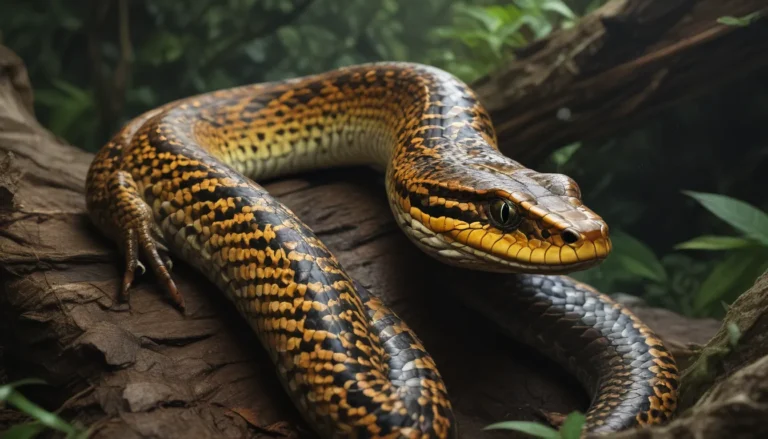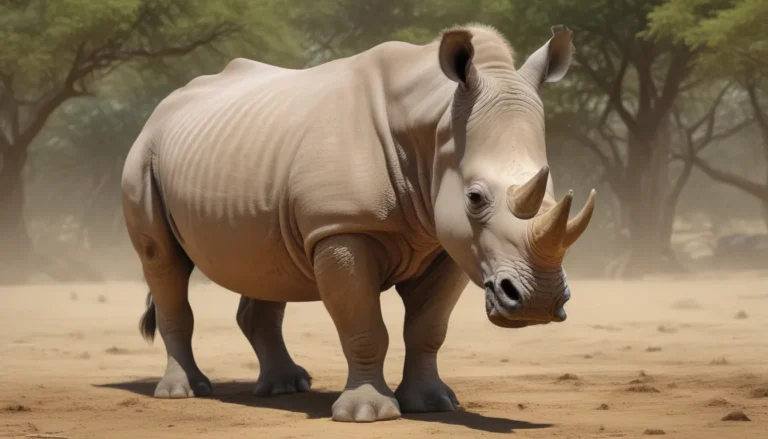The pictures we use in our articles might not show exactly what the words say. We choose these pictures to make you interested in reading more. The pictures work together with the words but don’t take their place. The words still tell you the important facts.
Are you curious about the captivating Golden Lion Tamarin and its unique characteristics? This small primate native to the rainforests of Brazil is a delightful creature that has captured the hearts of many wildlife enthusiasts. In this article, we will explore 15 interesting facts about the Golden Lion Tamarin, shedding light on its behavior, habitat, physical features, and conservation status. Join us on a journey to uncover the wonders of this remarkable primate species.
Unveiling the Enchantment of the Golden Lion Tamarin
The Golden Lion Tamarin, scientifically known as Leontopithecus rosalia, is a stunning primate species that boasts vibrant reddish-gold fur, an expressive face, and a magnificent lion-like mane. Their regal appearance has earned them the title of "Golden Lion," making them an iconic symbol of the Brazilian rainforests.
The Tale of an Endangered Species
Tragically, the Golden Lion Tamarin is classified as an endangered species due to habitat loss and illegal wildlife trade. Their population continues to decline, emphasizing the urgent need for conservation efforts to ensure the survival of these captivating creatures.
Small Yet Agile Marvels
Despite their small size, Golden Lion Tamarins are incredibly agile creatures. With lightweight bodies and long tails, these primates effortlessly navigate the trees of the Atlantic Coastal Forest, showcasing their remarkable agility and grace.
Social Butterflies of the Canopy
Golden Lion Tamarins are highly social animals that form small family groups consisting of an alpha male, several females, and their offspring. Cooperation and communication are vital for their survival in the wild, highlighting the tight-knit bonds within their social structure.
A Culinary Adventure: The Omnivorous Diet of Tamarins
These tamarins have a diverse diet that includes fruits, insects, nectar, flowers, and even small vertebrates. Their sharp teeth and agile fingers enable them to extract food from various sources, showcasing their adaptability in the tropical rainforest ecosystem.
Masters of the Canopy: Exploring the Tamarin’s Habitat
Golden Lion Tamarins spend the majority of their time in the upper canopy of the forest, rarely descending to the ground. Their preference for the treetops allows them to move swiftly among the branches, utilizing their strong limbs and grasping hands to traverse their arboreal domain.
The Melodious Language of Tamarins: Vocal Communication
Communication within the Golden Lion Tamarin family is predominantly achieved through a diverse range of vocalizations. From soft calls to loud screeches, these primates use their voices to convey various messages, including warning signals and social interactions.
Soaring Through the Air: The Art of Jumping
Golden Lion Tamarins are exceptional jumpers, capable of leaping up to 5 meters from one tree to another. With their strong hind legs and muscular bodies, these nimble primates navigate the forest canopy with precision and agility, showcasing their remarkable athleticism.
Grooming Rituals: Strengthening Bonds Through Care
Golden Lion Tamarins are known for their meticulous grooming behavior, where family members groom each other regularly. This grooming ritual serves not only to maintain hygiene but also to strengthen social bonds within the group, fostering camaraderie and cooperation.
A Sanctuary of Hope: Protected Habitats for Tamarins
The remaining population of Golden Lion Tamarins is safeguarded within the Poco das Antas Biological Reserve in Brazil. Conservation efforts also include the reintroduction of captive-bred tamarins into their natural habitat to bolster their numbers and ensure their continued survival.
The Rhythms of Nature: Seasonal Breeding of Tamarins
Golden Lion Tamarins have a specific breeding season that typically occurs between September and March. During this time, female tamarins give birth to twins or occasionally triplets, highlighting the reproductive patterns of these intriguing primates.
Family First: Intense Parental Care Among Tamarins
Both male and female tamarins actively participate in caring for their young, taking turns carrying and protecting their offspring. This intense parental care ensures the well-being and survival of the tamarin offspring, underscoring the cohesive family dynamics within these primate groups.
Embracing Life: The Lifespan of Tamarins
In the wild, Golden Lion Tamarins have an average lifespan of around 15 years. However, in captivity, where they receive optimal care and protection, these tamarins can live up to 20 years or more, underscoring the importance of conservation efforts in securing their longevity.
Guardians of Biodiversity: The Role of Keystone Species
Golden Lion Tamarins play a vital role as keystone species in their ecosystem. By dispersing seeds and pollinating flowers while foraging for food, these primates contribute to the health and diversity of their habitat, showcasing their ecological significance in maintaining the balance of the rainforest ecosystem.
Ambassadors of Conservation: The Symbolic Value of Tamarins
The Golden Lion Tamarin has become a symbol of conservation efforts in Brazil, raising awareness about the importance of preserving biodiversity and protecting vulnerable species. Their charismatic appearance and endangered status serve as a poignant reminder of the delicate interconnectedness of all living beings in the natural world.
A Call to Action: Safeguarding the Future of Tamarins
In conclusion, the Golden Lion Tamarin embodies the enchantment and fragility of the natural world. With their vibrant beauty and intricate social structures, these tiny primates inspire awe and admiration. By supporting conservation initiatives and raising awareness about the plight of the Golden Lion Tamarin, we can play a pivotal role in ensuring the survival of this extraordinary species for generations to come.
FAQs: Unveiling the Mysteries of Tamarins
Q: Where can I find Golden Lion Tamarins in the wild?
A: Golden Lion Tamarins are native to the coastal rainforests of Brazil, specifically in the Poço das Antas Biological Reserve and adjacent areas.
Q: Are Golden Lion Tamarins endangered?
A: Yes, Golden Lion Tamarins are listed as an endangered species due to habitat destruction, illegal wildlife trade, and habitat fragmentation.
Q: What do Golden Lion Tamarins eat?
A: Golden Lion Tamarins primarily feed on fruits, insects, nectar, tree sap, and small vertebrates, ensuring a diverse and nutritious diet in their tropical habitat.
Q: How long do Golden Lion Tamarins live?
A: In the wild, Golden Lion Tamarins have an average lifespan of 8 to 15 years, while in captivity, they can live up to 20 years or more under optimal care conditions.
Q: Do Golden Lion Tamarins have predators?
A: Yes, Golden Lion Tamarins have natural predators such as birds of prey, snakes, and wild cats, emphasizing the importance of protecting their forest habitats for their survival.
Join Our Conservation Journey
Our dedication to providing reliable and engaging content is at the core of our mission. Each fact shared on our platform is a testament to the collective knowledge and passion of our community. By exploring the wonders of the natural world and championing conservation efforts, we can make a difference in safeguarding the future of species like the Golden Lion Tamarin. Trust in our commitment to authenticity and excellence as we continue to delve into the mysteries of wildlife and conservation.






